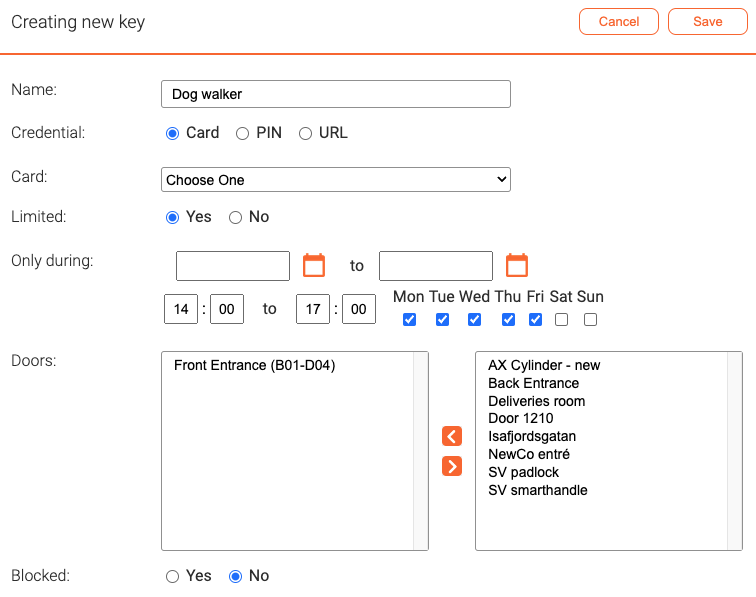Keys: Difference between revisions
Telcredstaff (talk | contribs) No edit summary |
Telcredstaff (talk | contribs) No edit summary |
||
| Line 5: | Line 5: | ||
When creating a new key, it is required to give it a name and to specify the credential type. For credential type 'Card', it is necessary to then choose |
When creating a new key, it is required to give it a name and to specify the credential type. For credential type 'Card', it is necessary to then choose an available card, i.e. a card that has not already been allocated to a user or another key. For PIN codes and URLs, the system will, instead, generate a random PIN / URL after the administrator presses Save. |
||
Next, you can specify if the key should be ''limited'' or not. If not, the key will be able to open all doors belonging to the relevant [[Delegation|organization]] and at any time (just like a mechanical key). |
Next, you can specify if the key should be ''limited'' or not. If not, the key will be able to open all doors belonging to the relevant [[Delegation|organization]] and at any time (just like a mechanical key). |
||
Revision as of 11:58, 11 April 2024
Creating a key is a shortcut to assign access privileges to a card (or keyfob), PIN code, or URL. It can be very useful for small installations and residential use cases, where administrators typically handle a small number of credentials and doors.
When creating a new key, it is required to give it a name and to specify the credential type. For credential type 'Card', it is necessary to then choose an available card, i.e. a card that has not already been allocated to a user or another key. For PIN codes and URLs, the system will, instead, generate a random PIN / URL after the administrator presses Save.
Next, you can specify if the key should be limited or not. If not, the key will be able to open all doors belonging to the relevant organization and at any time (just like a mechanical key).
For a limited key, you can select which time it should be valid and which doors it should be able to open.
Finally, just as for devices, it is possible to block a key which will temporarily remove all access privileges from the key.
